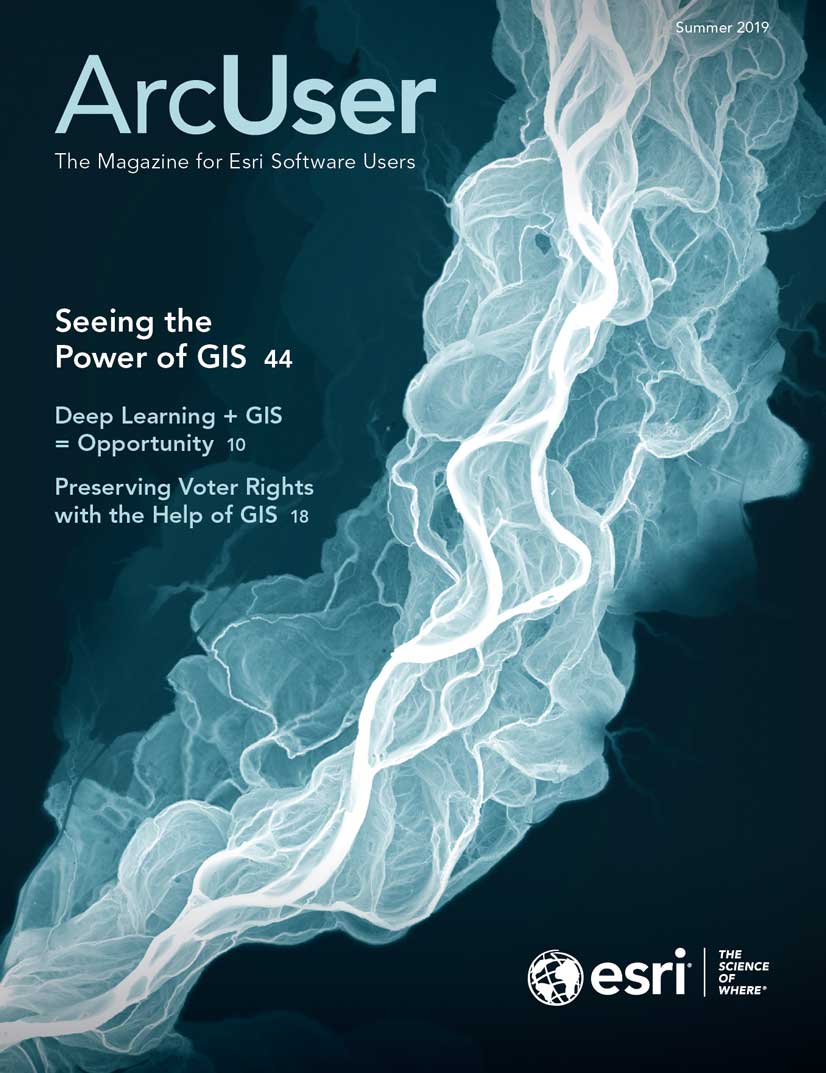According to a Chinese proverb, the best time to plant a tree was 20 years ago.
The second-best time is now.
Like planting a tree, the best time for your organization to expend the time and money to make a major change is sometime in the past. Now is the second-best time.
An article I wrote in the spring issue of ArcUser, “The High Cost of Low-Hanging Fruit,” observed that transformation is disruption that you do to yourself.
Although technology causes a lot of disruption in our daily lives, it’s not a single technology in isolation that enables large disruptions—it’s a combination of technologies, data, and other elements. Enabling technologies—such as a good street network, maps, GPS-enabled smartphones, cloud computing, and online payment—contributed to the disruption of taxis by Uber. However, the availability and capabilities of the Uber app was critical to Uber’s success. Average folks needed to be able to use the app and make payments through it.
This sounds simple, but do you remember when you were skittish about entering your credit card online? Although the iPhone was released in 2007 and an Android smartphone in 2008, it took several years for people to get used to downloading and using apps.
Now smartphones are owned by 62 percent of the global population and nearly 80 percent of Americans, and these percentages are growing rapidly.
Because new enabling technologies appear every day, defending against disruption is an ongoing process. You probably own technologies that enable disruption and transformation, but you may not use them to their full extent or in a way that transforms your organization.
GIS is a disruptive technology. It continues to be a disruptive technology by leveraging other emerging and evolving disruptive technologies. A few of the key ones are associated with computing infrastructure, data, and GIS innovation.
The cloud, software-as-a-service (SaaS), mobile, and distributed computing are improvements to the computing infrastructure that deliver answers faster and in ways that are more accessible.
From weather, traffic, and real-time sensor data to imagery, demographics, and scientific measurements, the data available today enables new and better types of analysis that improve decision-making.
GIS is rapidly innovating with advanced analytics, smart mapping apps, and robust and readily available SDKs and APIs for developers that help deliver rapidly evolving capabilities that can be accessed and used by non-GIS professionals and GIS professionals alike.
The combination of these technologies delivers Web GIS, an emerging disruptive technology. ArcGIS has transformed (self-disrupted) into Web GIS, which is driving transformation in many organizations. Web GIS enables organizations to move from sequential to simultaneous workflows with integrated operations that share data and services and totally change how the organization works.
And there’s more technology coming, enabling more and larger disruptions more quickly.
This process won’t stop.
Just when you think you’re safe, more enabling technologies will combine to disrupt your work. You can’t afford to be complacent. Staying current with technology and beginning your own transformation are your best defense against external disruption. Complacency is fatal in these times of rapid technological advances and disruption.
Now is the time to look more closely at your GIS and discover how you can use it to enable your transformation by asking some of the following questions:
- Are you using dashboards to have the information you need at your fingertips?
- Are you leveraging location analytics to see what your data is trying to tell you?
- Are you using external datasets to augment your operational data?
- Will artificial intelligence and machine learning improve your operations?
- Have you investigated how to standardize or automate some of your work?
- Simply put, will using all the benefits of GIS improve your organization and aid in transformation? It’s difficult to imagine it won’t.
Now’s the time to get started. Sign up for a webinar. Attend a user meeting and learn from peers. Engage with your technology providers and ask the tough questions. Ask yourself, how can I do things better? Think transformation and disruption. Think, how do I leapfrog my organization and get maximum value from today’s GIS technology? Examine your GIS and your organization. Learn what Web GIS can mean to your organization’s mission and mandates.
The second-best time to plant a tree is now.
The second-best time to transform your organization is also now.





